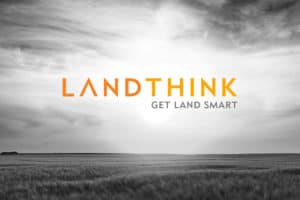At the risk of over-simplifying to set up an argument, let’s assume there are two general approaches to investing in stocks, real estate and many other assets.
The first might be called “value investing.” This is buying the item at something less than or at least not too much more than its intrinsic value, which can be determined, or at least estimated, in different ways, such as calculating a current net sale value. This general approach is associated with Benjamin Graham (The Intelligent Investor), Warren Buffet and Burton G. Malkiel (A Random WalkDown Wall Street).
The second approach might be called “growth investing,” which Malkiel calls “the castle-in-the-air theory.” It is less interested in any hard evaluation of a stock or asset and very interested in the psychology of the market for the item. Believers try to anticipate where growth (or demand) will materialize.
John Maynard Keynes described this approach as psyching out how a crowd of investors will behave in the future. During upswings, these investors tend to build their hopes in air castles. They believe the price they pay today will be less than the price they sell for tomorrow (metaphorically speaking), because everything is moving up on the momentum of market psychology.
Investors in both stocks and real estate (of all kinds) jumped on the growth model during the last 15 years. The working assumption was that a bigger fool would pay more in the future for what I’m paying too much for now.
Tech stocks with ridiculous price-earnings ratios and inflated prices were snatched up because they had something to do with the Internet and computers. Timberland and undeveloped land was bought with the idea of flipping it in two years (or sooner) at twice the money undivided and three times the money chunked out. Small unsuccessful farms were sold to second-homers and retirees for prices totally unrelated to their ability to generate cash; they were priced at and bought at what might be called, “lifestyle valuations.”
If I were smarter or shrewder, perhaps I’d be more comfortable with growth investing. Since I’m not, I look at realistic estimates of what assets are currently worth to me in light of my resources and plans, and the attributes of the investment. While appraisals based on comparable analysis serve a purpose, they represent a valuation based on recent comparable sale prices, not intrinsic value that the buyer can cash out. If the three comps the appraiser used were purchased by growth buyers, then the appraisal will reflect growth-investing prices.
So here are a few thoughts about applying value investing to rural real estate:
1. Cash-out potential. What is the current net cash value of all assets on the property as an entirety, and then unbundled into saleable parts? Be conservative. A purchase price should not be very far above the cash value of the entirety, and preferably below.
Entirety cash value might be defined for my purpose as the dollars left in a buyer’s pocket were he to (hypothetically) sell the property the day after he acquired it. Unbundled cash value should exceed entirety cash value.
2. Buyer’s timeframe. A buyer can pay above net entirety cash value if a long holding time is anticipated and no need to sell the investment can reasonably be anticipated.
A buyer could play around with a formula that relates each year of guaranteed hold to each one percent paid over net entirety cash value. Maybe a one-to-one ratio would work in most circumstances, that is, a buyer can feel safe in paying 20 percent over net entirety cash value as long as no need to sell the property is likely for the next 20 years. (This is a very conservative guideline.)
3. Financing. Low financing costs influence the ability to carry real estate purchases. But keep them out of a buyer’s current cash value analysis of the investment. They are related, but separate calculations.
4. Future cash flow. This is highly variable, because it depends on both the individual property as well as the buyer’s intentions and future circumstances. Some country properties, such as a second home used exclusively for the owner’s recreation, will never generate annual cash. Hardwood timberland might generate a lump-sum payment every 30 years. Other timberland can generate annual cash sales. Farm businesses will vary in projected annual net income from not much to a lot, depending on the products, operation size and other factors.
I would not consider future cash flows in valuing most real estate. (I know this will raise a storm of dissent. I understand the purpose of and how to do discounted cash flow analysis.)
To apply value investing, I would look exclusively at what the immediate net cash value is for the entirety. DCF analysis adds speculation and assumptions that move a buyer’s focus away from immediate cash value.
5. Determining immediate cash value. Appraisals produce a current value in light of three recent comparable sales. Is that an immediate cash value?
It could be. In a declining market, I would discount any appraisal value to reflect the costs of selling the property (theoretically immediately). And if the past six-month or one-year trend is down 10 percent, I would add at least another 10 percent discount to any appraisal value. In a market rising for tangible reasons, a buyer might use an appraisal value as cash value. In a market rising for intangible reasons (the irrational exuberance of growth investing and speculation), I would discount an appraisal value.
As a buyer, I would anchor my immediate cash-value analysis in the property’s tax-assessed valuation (TAV), and then adjust up or down in light of local market factors, changes on the property itself and the date of the last reassessment. TAVs can exceed a current appraisal value, but they tend to be lower than current appraisal values in rural areas. TAV is a good place for a buyer to begin value investing.
This content may not be used or reproduced in any manner whatsoever, in part or in whole, without written permission of LANDTHINK. Use of this content without permission is a violation of federal copyright law. The articles, posts, comments, opinions and information provided by LANDTHINK are for informational and research purposes only and DOES NOT substitute or coincide with the advice of an attorney, accountant, real estate broker or any other licensed real estate professional. LANDTHINK strongly advises visitors and readers to seek their own professional guidance and advice related to buying, investing in or selling real estate.








How do you reach a value on a lake. Say you have a plot of land that is 200 acres. 110 acres is timber and you have determined a value of $1200 per acre based on future income from the timber [it could be other crops] but how do you come to the value of the 90 acre lake? The lake will not produce income but will provide recreation so how do you arrive at a value?
value on a lake is what it costs to build.. Bottom line. Water is a feature everyone wants.. This item can be priceless to some and combersome to others. what is it worth to you? We build 5 acre lakes for 50k.
have you considered farm raised talapia.. quite the cash cow these days…
Could you say a 90 acre lake would cost in the $400K range?
Mr. Sneed,
You might try calling an appraiser in your area and asking them how they value a lake. Also check with local lenders who may have loaned on land with farms. In my area they often have different aspects of a transaction broken down into dollar amounts. Timber = $1200/acre, Barn = $10,000, lake = $8000, etc…
In our area when listing a property to sell that has an existing lake, we generally double the dirt value because it costs roughly 1 to 2 times the dirt value of the land to build a lake that same size. It all depends on the area and the site. You will do better having a more local price opinion on what your lake is worth.
A 90-acre lake is an impressive water feature. Not many people at all have private lakes that size in Alabama.